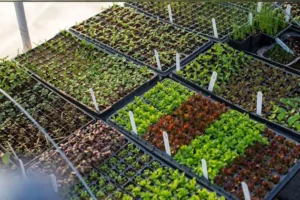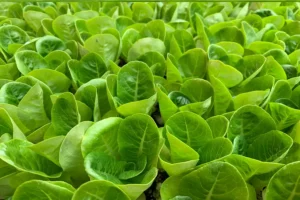As winter fades and spring begins to beckon, gardeners eagerly prepare for their favorite time of year – planting season. But before gleefully sowing seeds in the ground, there’s one crucial question that lingers in every green thumb’s mind: How cold is too cold for seedlings? As delicate as a newborn baby, these tiny sprouts require just the right amount of warmth to thrive. Here Share experience, that will delve into the fascinating world of plant biology and uncover the optimal temperature range for nurturing seedlings into strong and healthy plants.
Understanding the Ideal Temperature Range
Seedlings are delicate and sensitive to temperature fluctuations. To ensure their optimal growth, it’s essential to provide them with the right environmental conditions. The ideal temperature range for most seedlings falls between 65°F to 75°F (18°C to 24°C). Within this range, seedlings thrive and develop robustly.
The Risks of Cold Exposure
Exposing your seedlings to temperatures below the recommended range can lead to several issues. First and foremost, cold temperatures can stunt the growth of your seedlings. They may also develop a condition known as “cold stress,” which manifests as wilting, slowed growth, and discolored leaves.

Furthermore, extremely cold conditions can be fatal for seedlings. Frost and freezing temperatures can damage plant cells, causing irreparable harm. In severe cases, your seedlings may not recover from the cold shock.
Identifying the Lower Limit
Now that we understand the risks, let’s pinpoint the exact temperature at which seedlings are in danger. Generally, most seedlings start experiencing stress and potential damage when exposed to temperatures below 50°F (10°C). However, the threshold can vary slightly depending on the type of plant.
Cold-sensitive plants, such as tomatoes and peppers, are more susceptible to damage and should not be exposed to temperatures below 50°F. On the other hand, cold-hardy plants like lettuce and spinach can tolerate slightly lower temperatures, but it’s best to keep them above 40°F (4°C) for optimal growth.
Protecting Your Seedlings
To protect your seedlings from the perils of cold weather, consider the following precautions:
Use Frost Covers
Cover your seedlings with frost blankets or row covers on chilly nights to trap heat and maintain a warmer microclimate.
Select Appropriate Planting Dates
Plant your seedlings according to your local climate and the specific requirements of each plant. This will help you avoid exposing them to extreme cold.
Provide Adequate Insulation
To regulate temperature and insulate the soil surrounding your seedlings, use mulch. The roots are kept warm as a result of this.
Consider Indoor Seed Starting
If your area experiences prolonged cold spells, consider starting your seedlings indoors and transplanting them when the weather warms up.
Monitor Weather Conditions
Keep a close eye on weather forecasts, especially during the early stages of growth. Be prepared to take action if cold snaps are expected.
What is the coldest temperature for seedlings?
The coldest temperature for seedlings can vary depending on the specific type of plant, as different plants have different temperature requirements for germination and growth. However, as a general guideline:
Cool-Season Crops
Seedlings of cool-season crops like lettuce, spinach, and peas can typically tolerate temperatures as low as 40°F (4°C) or slightly lower. Some may even survive light frost.
Warm-Season Crops
Seedlings of warm-season crops like tomatoes, peppers, and cucumbers are more sensitive to cold temperatures. They should not be exposed to temperatures below 50°F (10°C) for extended periods.
Tropical Plants
Seedlings of tropical plants, such as tropical fruit trees, are highly sensitive to cold and can be damaged or killed by temperatures below 50°F (10°C).
Frost
Most seedlings are vulnerable to frost, which can occur when temperatures drop to or below freezing (32°F or 0°C). Frost can be particularly damaging to young plants.

It’s important to note that while seedlings of some plants can survive brief exposure to colder temperatures, they may not thrive or grow well. To ensure the health and vitality of your seedlings, it’s generally best to provide them with the appropriate temperature and growing conditions recommended for the specific plant species you are cultivating. This information can usually be found on the seed packet or in gardening guides for the particular plant.
What is the coldest temperature for plants?
The coldest temperature that most plants can tolerate depends on the specific plant species and its adaptation to cold climates. However, in general, most plants start to experience damage and stress when exposed to temperatures below freezing (0°C or 32°F).
Because they are not acclimated to cold climates, tropical and subtropical plants are particularly susceptible to frost and subfreezing temperatures. However, many cold-hardy plants, such those that are indigenous to temperate or alpine habitats, have evolved defenses to withstand even lower temperatures.
For example, some cold-hardy plants can withstand temperatures as low as -40°C (-40°F) or even lower in extreme cases. These plants have evolved various adaptations, including antifreeze proteins, protective structures, and the ability to go dormant during winter to survive harsh cold conditions.

It’s important to note that the specific cold tolerance of a plant can vary widely, so it’s essential to research the cold hardiness of a particular plant species if you are planning to grow it in a cold climate or during winter months. Providing appropriate protection, such as mulching or covering, can also help plants survive colder temperatures.
How cold is too cold for seedlings indoors
The ideal temperature for indoor seedlings can vary depending on the type of plants you’re growing, but generally, a temperature range between 65°F to 75°F (18°C to 24°C) is considered suitable for most seedlings. However, some seedlings may have specific temperature preferences, so it’s a good idea to research the particular plants you’re growing for more precise recommendations.
Temperatures below 50°F (10°C) are typically too cold for most seedlings and can slow down their growth or even damage them. If the temperature drops significantly below this range, seedlings may experience stunted growth, reduced germination rates, or even die.
To provide the right temperature for your indoor seedlings
Use a heating mat
You can use a seedling heating mat or propagation heat mat to maintain consistent warmth for your seedlings. These mats are designed to keep the soil temperature in the optimal range.
Adjust room temperature
Keep your seedlings in a room with a controlled temperature, and avoid placing them near drafty windows or doors.
Use a thermometer
Place a thermometer near your seedlings to monitor the temperature regularly and make adjustments as needed.
Insulate or cover at night
If your indoor environment tends to get cooler at night, consider insulating your seedlings with blankets or plastic covers to trap heat.
Provide supplemental lighting
Proper lighting can also help maintain the right temperature for your seedlings, as some grow lights emit heat. Be sure not to place seedlings too close to the light source, as this can cause them to become too warm.

Remember that good air circulation is essential to prevent issues like mold or damping-off disease, so be cautious not to create an environment that’s too warm and stagnant. Balancing temperature, humidity, and light is key to nurturing healthy indoor seedlings.
Final Thoughts:
It is important to pay attention to the temperature requirements of seedlings in order to ensure their successful growth and development. While some plants may be more tolerant of cold temperatures than others, it is generally recommended to avoid exposing seedlings to temperatures below 50 degrees Fahrenheit. Cold temperatures can stunt growth, damage delicate tissues, and even kill young seedlings. By providing protection and creating a suitable environment for seedlings, gardeners can give them the best chance at thriving. So before you plant your next batch of seedlings, take the time to research their specific temperature needs and provide them with the care they require. Your efforts will be rewarded with healthy and vibrant plants that will flourish in your garden.